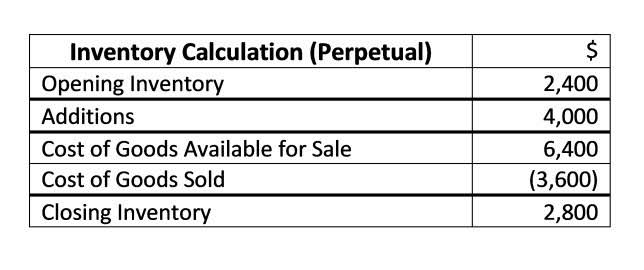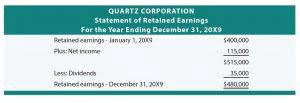
Let’s dive deep into its fascinating world and discover why it’s a cornerstone of financial auditing. Even in industries with rigorous internal controls, a small degree of detection risk is always present, which highlights the necessity for continuous auditor vigilance. Audit failure occurs when an audit firm issues an unmodified opinion and the financial statements are not fairly stated. Understanding and evaluating each component allows auditors to plan their procedures and allocate resources effectively to minimize the overall audit risk. Detection risk is the risk of failure on the auditor’s part to detect any errors or misstatements in financial statements, thereby giving an incorrect opinion about the firm’s financial statements. Control Risk is the risk of error or misstatement in financial statements due to the failure of internal controls.
Leveling Up Management of Audit Risk

For example, auditors should have a proper risk assessment at the planning stages. An example of audit risk materializing would be when a company in the pharmaceutical industry, known for high inherent risks, is not detecting a significant misstatement in its financial records. This could occur if the auditors rely solely on outdated manual auditing tactics, thus failing to implement updated technology-based inspection methods. The audit risk model can be used for “preliminary audit planning“ to assess the risks of audit risk model formula material misstatement for each class of transactions and account balance to determine the appropriate audit strategy. Detection risk is the risk that the audit procedures used are not capable of detecting a material misstatement.
- Many organizations schedule quarterly reviews of their audit strategies, using metrics like error detection rates and compliance levels to measure success.
- Inherent risk is based on factors that ultimately affect many accounts or are peculiar to a specific assertion.
- From uncovering multi-million-dollar fraud schemes to streamlining compliance in highly regulated industries, the applications of this model are as varied as they are impressive.
- They can identify patterns, trends, and outliers indicating potential issues or irregularities, ensuring a more targeted and efficient audit process.
- An audit risk model helps auditors decide what and how much evidence is required against different types of risks.
Embrace Technology: Amplify Your Efforts
- Higher risk areas would require more audit work as compared to lower risk areas.
- Ineffective internal controls failed to catch repeated overbilling from a third-party vendor.
- At this stage, the auditor might understand the client nature of the business, major internal control over financial reporting, financial reporting system, and many more.
- Detection risk is the risk that audit evidence for any given audit assertion will fail to capture material misstatements.
- This high-stakes scenario underscores the critical need to assess inherent risk upfront.
- The key for using RMM to drive detection risk is to remember that the nature, timing, and extent of further audit procedures planned needs to be responsive to the RMM identified.
Acceptable audit risk is the amount of risk an auditor will take when giving a “clean” report. A “clean” report means the auditor believes the controls are accurate and free of significant errors. In most cases, an auditor would use a tool to review evidence provided by the business. Even if the audit process is thorough, complexity and limited access to log data may cause gaps in identifying intricate information. After the risk assessment, the control risk score reaches 60% due to gaps in the execution and governance of controls.
- The risks primarily referred to threats that had direct or indirect impact on the functioning of the organisation, thence the causes of their occurrence and effects are determined.
- The auditor must assess each component to determine an appropriate level of audit risk and design and execute audit procedures that address the identified risks.
- An example of audit risk is missing a financial fraud detection by an auditor relying exclusively on antenatal procedures.
- The auditor assesses the risks at the entity control level and deep dives into the risks related to the activities control level that could significantly affect the quality of financial information.
- A GRC (Governance, Risk, and Compliance) automation tool like Sprinto, with its dedicated audit dashboard, makes things easier for both the business and the auditor.
Audit Risk Assessment (ISA : A Simple Explanation

The model provides new insights on some main perspectives on risk used for risk assessment and risk management. A set of adjusted risk definitions, all reflecting the exposure dimension, is considered. The audit risk model acts as that essential map for auditors, pinpointing areas of higher risk that demand more attention and resources. StudySmarter is a globally recognized educational technology company, offering a holistic learning platform designed for students of all ages and educational levels.
Understanding the Audit Risk Model: AR, IR, CR, and DR

Additionally, the rapid evolution of an entity’s environment and increasing sophistication of financial products heighten the detection risk. In navigating the multifaceted landscape of audit risk, auditors employ an arsenal of strategies and tools to fortify the integrity of financial statements. Audit risk management is a deliberate process, demanding precision, foresight, and a deep understanding of the client’s business and the inherent https://www.bookstime.com/ complexities of financial reporting. Risk assessment in auditing is complicated because it entails cataloging potential problems and conducting a dynamic analysis of how these risks interact within the context of the audit engagement. This understanding of audit risks lays the groundwork for the planning and execution of audit procedures that are finely tuned to the risk landscape, ensuring the reliability and integrity of financial statements. Financial auditing is both critical and complex, tasked with ensuring the accuracy and reliability of a company’s financial statements.

What Should Auditors Do to Minimize Audit Risks?
- Prior to joining AuditBoard, Rakeyia spent two years in external audit with a regional firm in Atlanta specializing in medical audits.
- In this type of risk, the auditor may be unable to point out any misstatement in the financial statement.
- The probability that audit procedures (2nd umbrella) may not detect material misstatements is detection risk.
- For example, control risk is high when the client does not perform bank reconciliation regularly.
- In navigating the multifaceted landscape of audit risk, auditors employ an arsenal of strategies and tools to fortify the integrity of financial statements.
With SearchInform at your side, audits become more than compliance exercises; they become opportunities to innovate, protect, and grow. Your audit team is buried under spreadsheets detailing thousands of transactions. One turns out to be a hidden fraud attempt—a transaction split across multiple accounts to Certified Public Accountant avoid detection. You catch it, resolve it, and prevent further damage, all before it becomes a headline-worthy issue.
